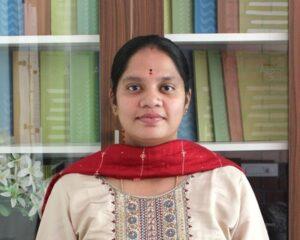Rajasthan Round
Three villages were surveyed in Rajasthan. Two villages were surveyed in Rajasthan in 2007 and one village was surveyed in 2010.
- Dungariya, Udaipur district (May-June 2007)
- 25 F Gulabewala, Sri Ganganagar district (May-June 2007)
- Rewasi, Sikar district (May 2010)
The results from the surveys of the two villages have been published as Socio-Economic Surveys of Two Villages in Rajasthan: A Study of Agrarian Relations by Tulika Books, New Delhi in 2015.
Dungariya, Udaipur district
Dungariya is a village in Kotra tehsil, Udaipur district. An all-weather road connecting Kotra to Udaipur passes through the village.

Village households are widely dispersed: one settlement of the village, Dungariya thala, for example, was about 4 km from the main road and accessible only by foot.
Dungariya is a small, mainly tribal, village. In 2007, 111 households lived in Dungariya. Of these, 107 belonged to different Scheduled Tribes.
Dungariya is a village where irrigation covered less than five percent of net sown area, and subsistence agriculture was practised. Its households were also dependent on forest products for subsistence. The main crops grown in the village were maize, red gram, black gram, wheat and cowpea.
Most households cultivated forest land that had been cleared, and to which they did not have formal legal titles. Households collected firewood, mahua, and other products from the forest.
Very little agricultural and non-agricultural wage employment was available in the village. Public works programmes, including the National Rural Employment Guarantee Scheme (which had just begun in 2007), were an important source of employment. Many persons from the village also migrated to Gujarat in search of seasonal employment.
Agriculture was mainly based on family labour, and additional labour power was mobilised through labour exchange rather than by hiring in labour power. Access to basic amenities in the village was very poor. There was no electricity in the village, no household had a water connection, and only one household had a lavatory.
25 F Gulabewala, Sri Ganganagar district
25 F Gulabewala is a village in Sri Ganganagar district. The village is about 25 km from Sri Ganganagar town and is connected to it by an all-weather road.
In 2007, 204 households lived in 25 F Gulabewala. The main castes in the village were Jat Sikh, Mazhabi (Dalit) Sikh, and Nayak (Dalit).
The village is irrigated by the Gang Canal project. The main crops cultivated in Gulabewala were wheat, rapeseed, cotton, cluster beans, and fodder crops. In the years preceding the survey, a decline in the availability of water had resulted in a decline in the cultivation of cotton. In particular, a substantial part of the agricultural land in the village was left fallow in the kharif season because of uncertain irrigation.
Land distribution in the village was extremely unequal. About 65 percent of all households in the village were landless. At the other end of the distribution, the largest land-owning household owned about 287 acres of land and 31 households owned more than 30 acres of land each. Agricultural land was owned primarily by Jat Sikh households, only three Dalit households, out of a total of 123 Dalit households resident in the village, owned any agricultural land. An important feature of agriculture in the village was a very high level of mechanisation of agricultural operations. Of the 72 households in the village that owned land, 34 owned a total of 42 tractors. Another important feature of agriculture in the village was the widespread employment of long-term Dalit workers by large landowners.
Rewasi, Sikar district
Rewasi in Sikar district (the village is also in Sikar block and tehsil) is 31 km from Sikar town, about 6 km from Sewad Badi village on the Sikar-Salasar road. Buses from Sikar to Didwana pass through Rewasi. There was a bus almost every hour between 7 am and 7 pm. The nearest railway station is in Sikar.
A pucca road connects the main habitation of the village with the Sikar-Salasar road. There were two small general stores (one was also a ration shop, and the other also sold some agricultural inputs). The nearest market was in Sewad Badi. The health sub-centre in the village provided only first-aid facilities, and people had to travel to the Primary Health Centre in Phagalwa (9 km) or to the Block/District hospital in Sikar (31 km) for other medical services. There was one primary school, one upper primary school and a high school (privately owned) in the village. Students from Rewasi also studied in schools in neighbouring villages.
At the time of our survey, there were 222 households resident in the village.
Rewasi is a multi-caste village. Jats were economically and politically the dominant caste. Jat households, once tenants of Rajput jagirdars, obtained ownership rights over land as a result of the abolition of different forms of statutory landlordism. In contrast, the Rajputs no longer held the same position of dominance in the village that they once did. There were also Brahman, Meena (Scheduled Tribe) and Meghwal (Dalit) households in Rewasi. Most households in Rewasi owned land, although there was substantial inequality in the extent of ownership of land across social groups and classes.
Pearl millet was the most important crop of the kharif season. In the rabi season, land irrigated by tubewells was sown with wheat, mustard, onions and fenugreek. In a village characterised by sandy soils and low rainfall, access to irrigation is critical, though limited. There were about 75 tubewells in the village. These irrigated about 41 percent of the net sown area in the village. Tubewells were used mainly in the rabi season. The kharif crop was mainly rainfed, even where land holdings were in the command area of tubewells. Unirrigated land was dependent entirely on scanty and uncertain rainfall for cultivation in the kharif season and was not cultivated in the rabi season at all.
As a result of a poor and delayed monsoon in 2009, the kharif crop had failed in the village. Yields of the rabi crops were also low.
Animal resources — the people tend cattle, camels and goats — were an important source of household incomes. The maintenance of animals depends crucially on fodder from field crops and the leaves of the khejuri (Prosopis cineraria) tree.
Another important aspect of the village economy was the high rate of migration to other cities in India and to countries of the Persian Gulf. Remittances from these migrants were an important source of income for many households.












































































